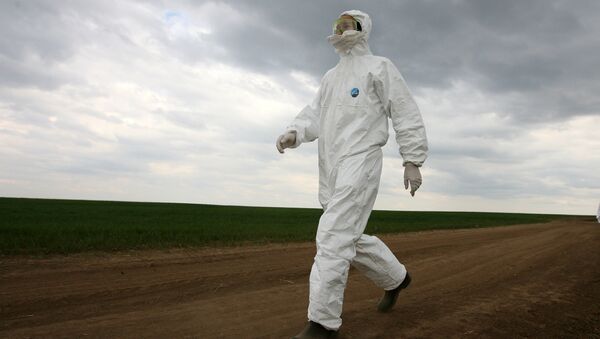A Mongolian domestic flight was intercepted at Ulaanbaatar airport as emergency workers wearing hazmat suits rushed to board the plane the instant it landed, acting on reports of a husband and wife dying of Bubonic plague in the region where the flight originated.
The man named Citizen T, aged 38, died after hunting and eating marmot meat; his pregnant wife, 37, died soon after, reported The Siberian Times.
BUBONIC PLAGUE outbreak sees medics board plane and quarantine passengers https://t.co/G5DbWxGmOB
— Global Analytica (@AnalyticaGlobal) May 3, 2019
Some 158 people were placed under intensive medical supervision in Bayan-Ulgii province after coming into contact directly or indirectly with the deceased couple.
According to the World Health Organisation, Bubonic plague can kill an adult in less than 24 hours unless timely treatment is at hand.
Patients may show signs of fever and nausea and at an advanced stage may develop open sores filled with pus.
READ MORE: Biblical Plague? WATCH Immense Swarm of Locusts INVADE Saudi Arabian City
It is caused by the bacterium Yersinia pestis, which is commonly found in small mammals and their fleas, and was linked to the Black Death that decimated over a third of Europe's population in the 14th century, as well as subsequent plague outbreaks.
Alert on Russian border with Mongolia after two deaths from ‘bubonic plague’. Russian tourists stuck in western Mongolia after closure of frontier to stop spread of infection.https://t.co/tAKAHfIZTg#plague #Mongolia pic.twitter.com/WxORlWZ8NG
— The Siberian Times (@siberian_times) May 3, 2019
Although today the disease is treatable with antibiotics, hundreds of people have died of it around the world in recent years, with most human cases occurring in Africa since the 1990s, according to WHO data.
READ MORE: Deadly Ancient Bacteria in Arctic Ice Could Spell Doom for Mankind — Scholar
There have also been some non-fatal cases in the US, with an average of seven reported annually, according to disease control officials.
The WHO confirms that from 2010 to 2015 there were 3,248 cases reported worldwide, including 584 deaths.


